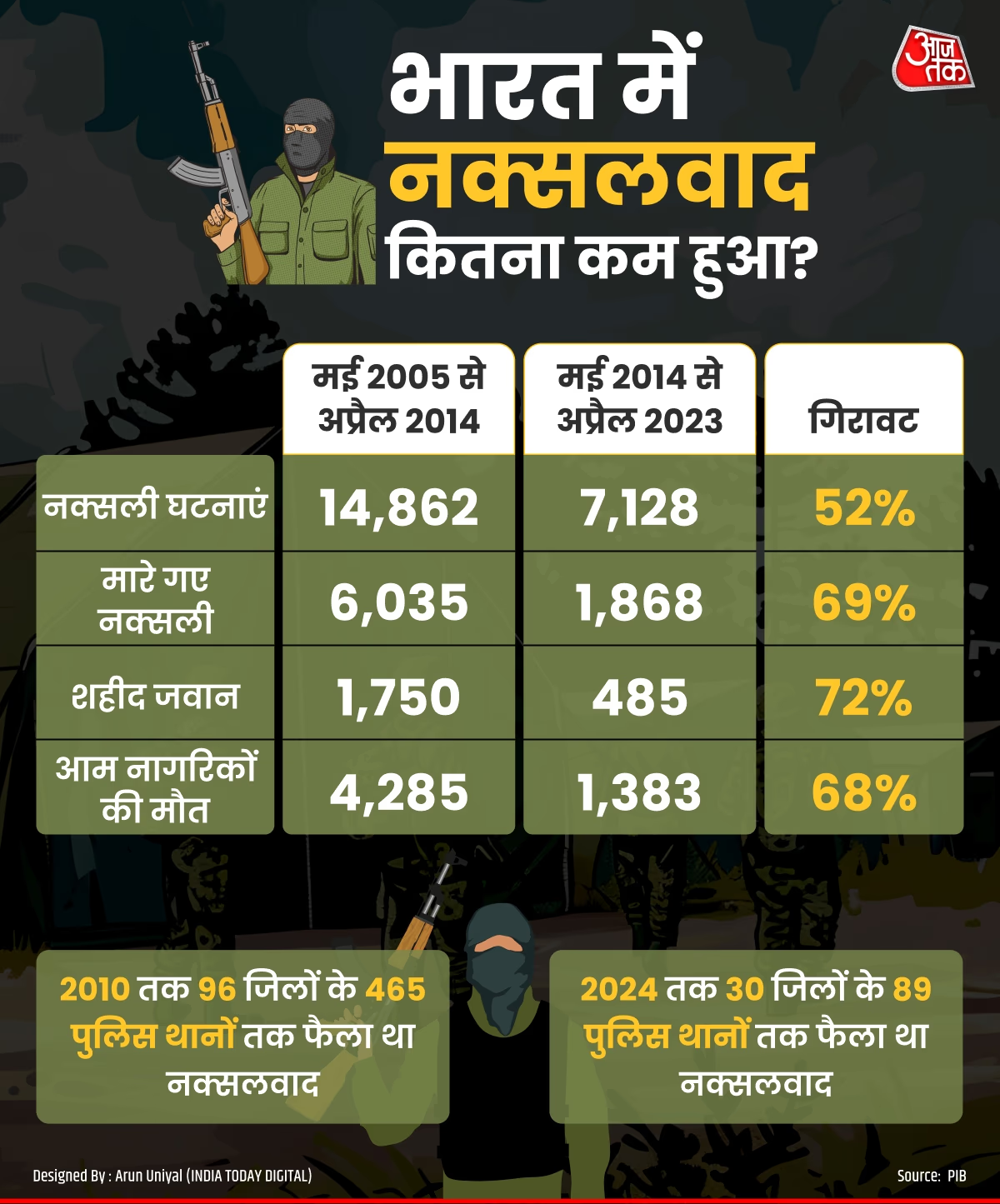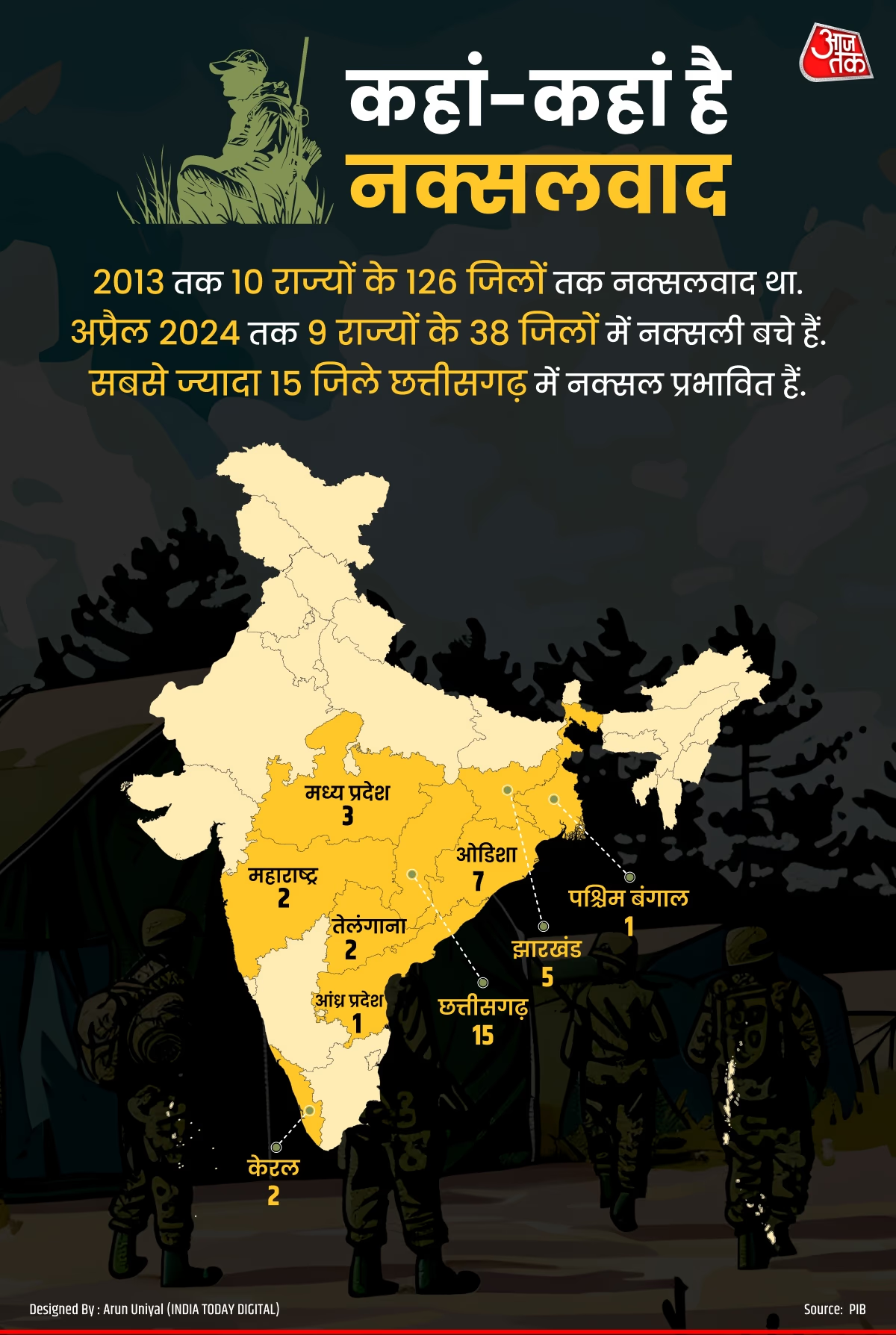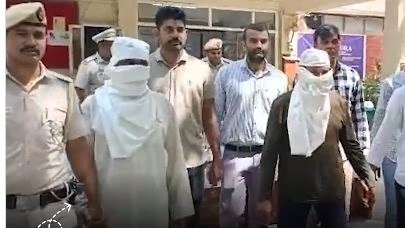Home Minister Amit Shah recently made a bold statement regarding Naxalism, claiming that it will be eradicated from the country by March 2025. He emphasized the need for a robust strategy to deliver the final blow to Naxal insurgency.
Amit Shah urged Naxalites to lay down their arms and surrender, mentioning that a new surrender policy will be announced in Chhattisgarh within the next couple of months.
Currently, Chhattisgarh is the most affected state with 15 districts impacted by Naxalism, including Bijapur, Bastar, Dantewada, Dhamtari, Gariaband, Kanker, Kondagaon, Mahasamund, Narayanpur, Rajnandgaon, Mohalla-Manpur-Ambaghad Chowki, Khairagarh-Chhuikhadan-Gandai, Sukma, Kabirdham, and Mungeli.
A crucial meeting was held in Chhattisgarh on August 24 to discuss the Naxalite issue, attended by DGPs and Chief Secretaries of all states. During this meeting, Amit Shah declared that Naxalism would be completely eradicated by March 2026. He stressed the need for a firm strategy to deliver the final blow against Left-wing extremism.
Shah pointed out that Left-wing extremism poses the biggest challenge to the democratic setup, resulting in the deaths of over 17,000 people in the past four decades.

Source: aajtak
Will India Be Naxal-Free by 2026?
Amit Shah's claim to make India Naxal-free by March 2026 seems ambitious. But let's look at some data to understand its feasibility.
On August 7 this year, Minister of State for Home Affairs Nityanand Rai presented data in Parliament regarding Naxalism. According to him, Naxalite incidents have decreased by 73% in 2024 compared to 2010, and deaths in these incidents have reduced by 86%. In 2010, 1,005 people died in Naxalite incidents, whereas only 138 deaths were reported in 2023, including security personnel.
He also mentioned that by 2013, 126 districts across 10 states were affected by Naxalism. However, by April 2024, Naxalism had receded to 38 districts across 9 states.
How Much Has Naxalism Reduced?
Three years ago, 10 districts in Bihar were Naxalite strongholds. But now, Naxalism has been completely eradicated from Bihar.
Similarly, in states like Andhra Pradesh, Jharkhand, Odisha, and Telangana, Naxalites are confined to just a few districts. In 2021, 16 districts in Jharkhand were Naxal-affected, but now only 5 remain affected. In Andhra Pradesh, Naxal-affected areas include Aluri Sitaramaraju district. Other affected areas are Wayanad and Kannur in Kerala; Balaghat, Mandla, and Dindori in Madhya Pradesh; Gadchiroli and Gondia in Maharashtra; Bhadradri-Kothagudem and Mulugu in Telangana; and Jhargram in West Bengal.
According to government data, by 2010, Naxalism had spread to 465 police stations across 96 districts. By the end of 2023, it had receded to 171 police stations across 42 districts. As of June 2024, only 89 police stations in 30 districts are affected by Naxalism.

Source: aajtak
How Will Naxalism End by March 2026?
A few years ago, over a dozen districts in Jharkhand were Naxal strongholds, but now it’s reduced to just five districts: Giridih, Gumla, Latehar, Lohardaga, and West Singhbhum.
DGP Anurag Gupta of Jharkhand recently mentioned in a review meeting that hefty rewards up to INR 1 crore are offered for the surrender or capture of Naxalites. Jharkhand Police launched 'Operation Octopus' last year to clear Naxalites from one of their major strongholds, Burha Pahad, and also initiated the Burha Pahad Development Project.
Amit Shah revealed that since 2019, 277 CRPF camps have been established in Naxal-affected areas. Agencies like ED and NIA are also running operations to cut off Maoist funding.
Chhattisgarh remains the most impacted state but intensive operations are ongoing. Recently, 25 Naxalites surrendered in Bijapur, including five with significant bounties. Earlier, a Naxal couple with a bounty of 10 lakh INR also surrendered in Dhamtari.
Shah shared that since Vishnu Deo Sai took charge in Chhattisgarh, 179 Naxalites have been eliminated, 559 arrested, and 540 surrendered. He urged Naxalites to surrender and informed about an imminent new surrender policy.
Special DGP R.K. Vij mentioned that Maoists are weakening in Dandakaranya due to continuous surrenders and no new recruitments, making it challenging for them to hold their territories. Dandakaranya's forests were once major Naxal hubs.
Former Maharashtra IPS officer P.K. Jain opined that with political willpower, Naxalites can be controlled. In Maharashtra’s Gadchiroli, Naxalites are now limited, and anti-Naxal operations in Gondia have kept them in check.




